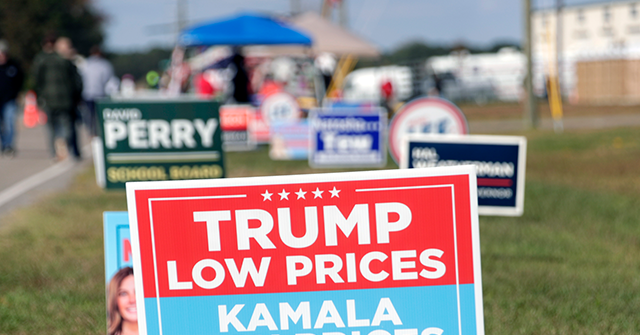As the presidential election approaches, Americans continue to express a pessimistic outlook on the economy. Recent polling conducted by the New York Times and Siena College reveals that a mere two percent of registered voters rate the economy as “excellent.” This figure remains unchanged from previous polls conducted a year ago, illustrating a consistent dissatisfaction that echoes through the sentiments of the electorate. Significantly, assessments of economic conditions remained bleak through 2023 as well, with similar polling results obtained during the summer, where only two percent of voters felt positively about the economy. However, there was a brief moment of optimism in February when seven percent rated the economy as excellent, suggesting fluctuations in public confidence even amid a generally negative landscape.
Despite enduring negativity, there have been slight improvements in the overall mood of the country toward economic conditions. A year ago, only 16 percent of individuals polled in battleground states viewed the economy as “good,” and when combined with the exceedingly positive ratings, a total of 18 percent held favorable opinions about current economic conditions. The latest nationwide polling indicates a small increase, showing that 19 percent find the economy to be good, which brings the total positive assessments up to 21 percent. This marks a notable comparison to the summer of 2022, a time when fears of recession loomed large and economic dissatisfaction was at its peak, with only one percent of respondents rating the economy as excellent and just nine percent viewing it as good. Thus, while public perception has improved slightly due to efforts to reduce inflation and sustain economic growth, the overall sentiment remains overwhelmingly negative.
In evaluating voter sentiments regarding economic conditions, the year-to-year comparisons reveal only incremental changes in consumer perceptions. In the summer of 2022, an alarming 29 percent of voters categorized the economy as “only fair,” while a majority, 58 percent, deemed it “poor.” Fast forward to the following summer, the figures showed a marginal improvement at the lower end of the scale, where 49 percent classified the economy as poor and the same percentage held the view of it being only fair. However, for most of 2023, the percentage of voters rating the economy poorly has hovered around 50 percent, with the latest polls reflecting that 49 percent maintain this negative view. The data from late September and early October among likely voters shows minimal change, with merely three percent rating the economy as excellent and 47 percent asserting it remains poor.
Efforts from the Democratic Party to capitalize on improved economic perceptions in the lead-up to the election appear to have fallen short of their expectations. Many voters still feel the strain of high prices and ongoing inflation despite recent decreases, which has contributed to a reluctance to adopt a more favorable view of the economy as portrayed by President Joe Biden and Vice President Kamala Harris. Consequently, the economy remains the paramount concern among voters, consistently ranked as the number one issue throughout the election cycle, which positions former President Donald Trump in a favorable light among the electorate. Trump is viewed as significantly more competent in handling economic matters, leading to a noticeable gap in favorability compared to Harris.
In the latest Times/Siena poll of likely voters, Trump commands a notable lead, with 52 percent expressing confidence in his economic management compared to 45 percent who favor Kamala Harris. While it is a modest improvement from last November, where 59 percent supported Trump over 37 percent for Biden among registered voters in battleground states, this shift is still below what Democrats had initially hoped to achieve. The outcomes of the upcoming election may ultimately unveil whether the marginal gains made by Harris will suffice to counteract Trump’s longstanding advantage with voters who prioritize economic issues.
As the election date approaches, the narrative surrounding economic perceptions will undoubtedly play a critical role in shaping voter decisions. With a considerable focus placed on economic management, politicians will need to reconcile the disparity between public sentiment and actual economic indicators. Despite some signs of recovery and optimism, the prevailing sentiment reflects caution and dissatisfaction, leading to an electorate that heavily favors Trump’s approach to economic governance as they seek stability and reassurance in uncertain times. The final results may hinge on whether the Democratic Party can convincingly address economic concerns and win over skeptical voters who remain largely disillusioned despite affirmations from current leadership.

